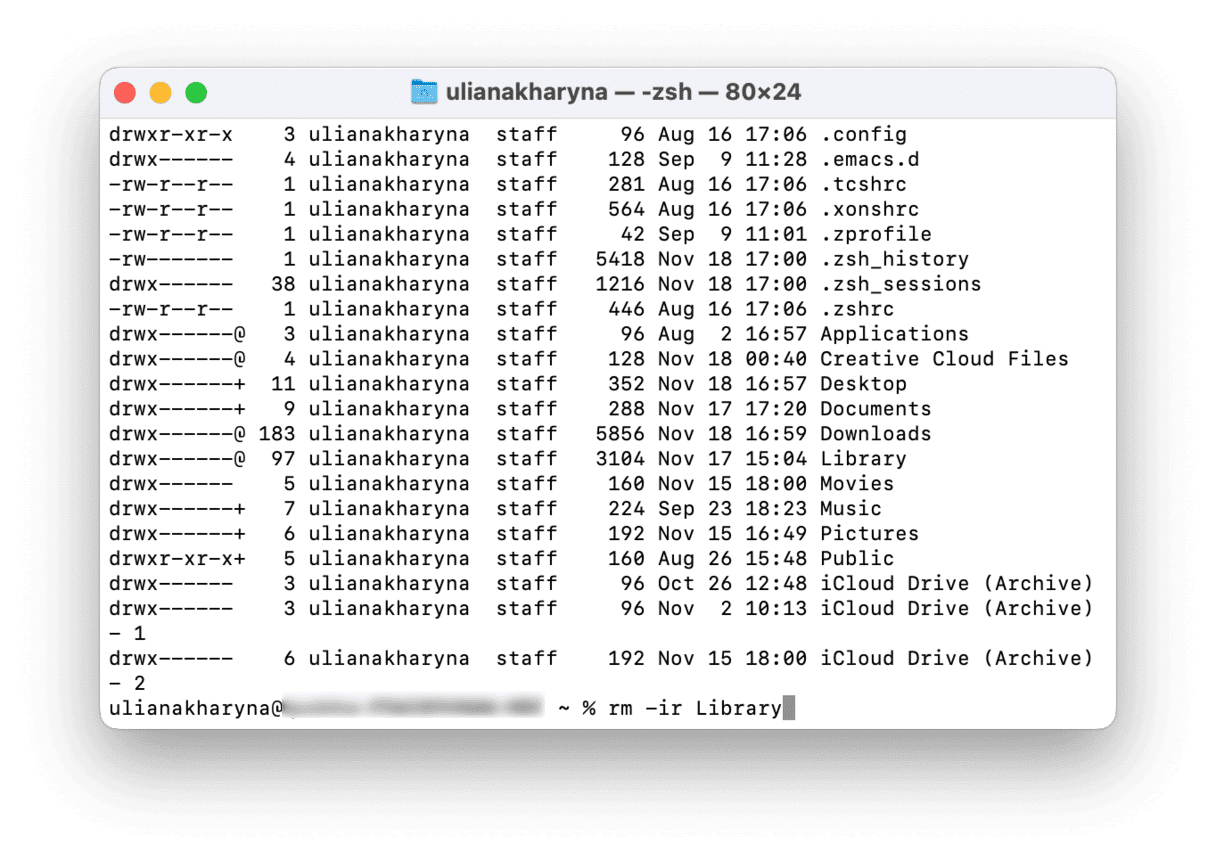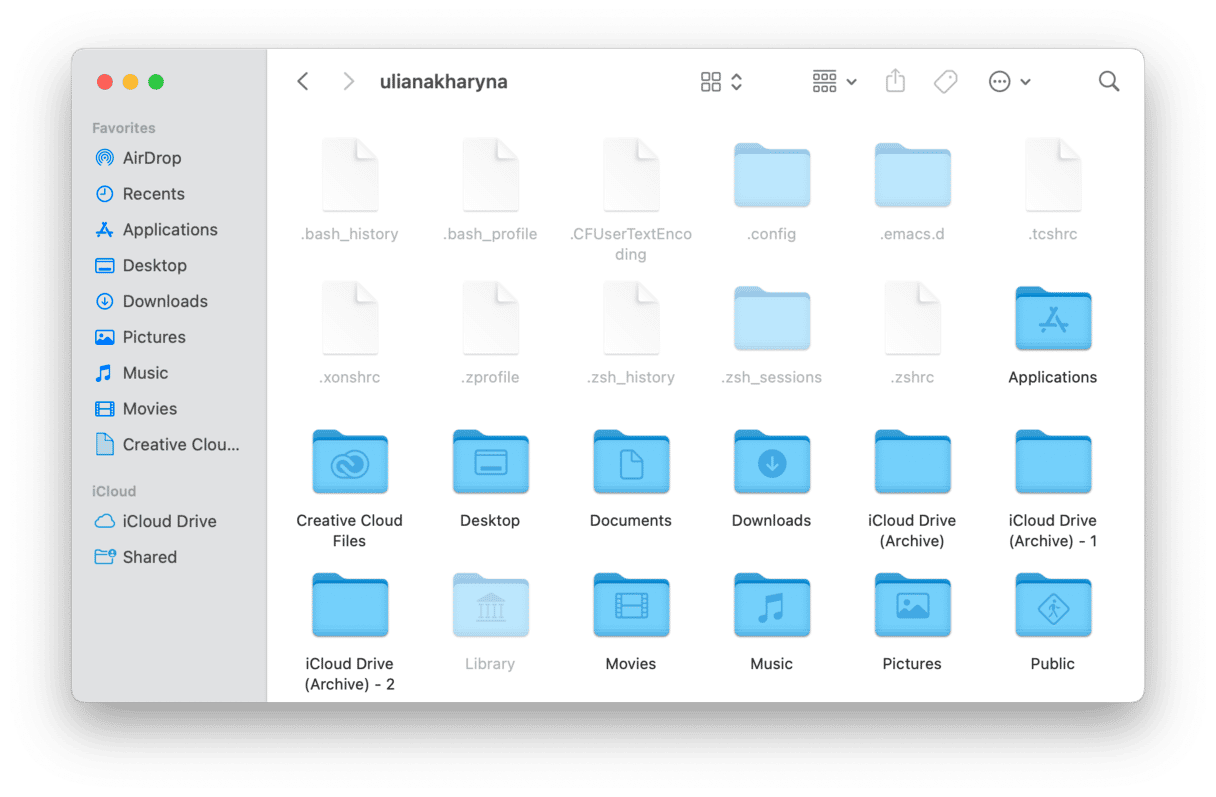One of the most basic computer functions — deleting files and folders — is also one of the most essential. If you never get rid of anything, soon enough, all those extra gigabytes will take a toll on your Mac’s processing power, RAM, and hard drive, not to mention that your digital life will resemble a dreadful episode of Hoarders.
So, deleting files is good and healthy. But how do you do that? Most people right-click on what they need gone and choose Move to Trash from the menu or use the File option in the menu bar. Others employ the ⌘ + Delete shortcut, which works across the system — even within dialog windows. Experts, however, often find themselves defaulting to the command line delete directory feature. Let’s see how and why you should learn it, too.
How to remove directory with Terminal
Since macOS is a Unix-based system, nearly all system tasks you do every day with the help of its graphic interface can also be performed via the command line tool called Terminal.
Why delete file command line feature is important
With regards to the delete file or delete folder command line functionality, Terminal lets you:
- Effortlessly erase one or multiple files, folders, and apps, bypassing any error messages you can get when you go the traditional route.
- Remove files from Trash, including ones you can’t delete, by simply emptying the trash.
- Get rid of files that are invisible to you within Finder (usually system or root files, for example, .htaccess).
- Delete files and folders in cases when Finder is unresponsive.
Tip: Delete unneeded system files on Mac
Some files are hard to delete in the usual way because they sit deeply in system folders. These are such files as logs, broken downloads, caches, remains of old apps, etc. Still, deleting them could give your Mac an extra boost — that’s because they are outdated and clutter your macOS.
To remove these files, try a free version of CleanMyMac. This app has an impressive Cleanup feature, among other things. Get your free trial here.

How to use delete file command line feature
Removing files from your Mac forever using Terminal is deceptively simple: just use the rm command followed by the name of the file. Here’s how it works in practice:
- Open Terminal from your Utilities folder in Applications.
- Check which directory you’re in by typing
ls -la - Then, navigate down a directory with
cd [directoryname]or up a directory withcd ../ - When you’re in the same directory as the file you want to delete, type
rm [filename.extension] - If you want to delete multiple files at once, list them all, but make sure there’s a space between each one.
- Press Return to execute the command.
Now, all the files you specified after rm are gone for good. Navigate directories in your Mac and repeat the process as many times as you want.
Surprised there was no confirmation before your files were deleted? Luckily there’s a way to add one as a safeguard for not deleting the wrong file by accident. Just use -i after the rm but before the first filename, like this: rm -i [filename.extension]. Terminal will then ask you whether you’re sure you want to delete the file. Reply y or yes followed by Return, and the file will be gone. This also works for multiple files, but you’ll have to confirm the removal of each one separately.

How to make command line delete directory
Surprisingly, you can’t delete a folder using the rm command because it has its own: rmdir
Otherwise, rmdir works exactly the same as rm:
- Navigate to the appropriate directory using Terminal.
- Type
rmdir [directoryname] - Hit Return.
Sadly, you can’t use the -i hack when you’re deleting folders, so be extra careful!
Another thing to keep in mind is that rmdir only deletes the directory but can’t delete any files or folders located within that directory.
To delete a folder with everything in it, you need to use rm -r followed by the folder’s name. Using -i to create a warning here is possible and done like this: rm -ir [foldername]

Delete large and old folders using CleanMyMac
As it happens with folders, they are easy to mess up and lose track of. That’s why many apps provide an alternative interface for searching and deleting files, which is more flexible than the Finder. For example, using CleanMyMac (the app we’ve mentioned above), you can find massive folders that might have been avoiding you. You also can filter them by file type and other criteria.


Other ways to delete files and folders on Mac
The shortcut combination
We are sure you know how to drag your files to the Trash. But here is an alternative way that deletes files at once, bypassing the Trash. There’s one less step involved (you don’t have to empty the bin). And you cannot reverse this action.
Select a file, and press [Option + ⌘ + Delete].

Delete hidden folders on Mac
Some folders on your Mac are made invisible to protect them from accidental deletion. They are system and support files you would ignore most of the time. But what if a folder seems empty but still takes up space? You can apply another shortcut combination to highlight these unseen objects. Then, you can delete them at your own risk.
To highlight hidden folders, press Shift + ⌘ + dot key.
This best works if you open some system folder, such as Library.
Hidden files and folders are those greyed out on the screenshot below.

Again, delete these folders only if you are sure what they are.
That was how to remove files and folders on your Mac, shown in multiple ways. Want to know more? Explore our blog for a whole universe of Mac tips!






